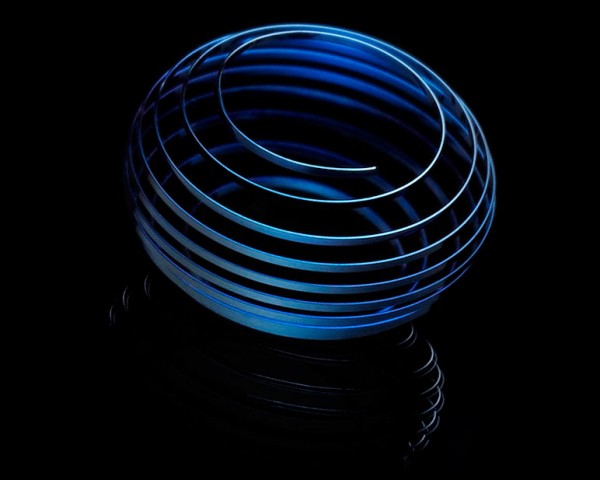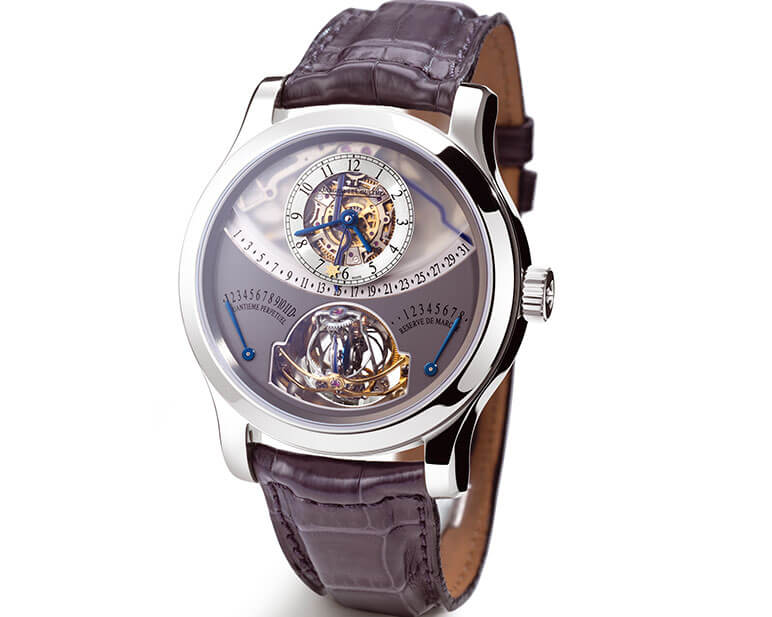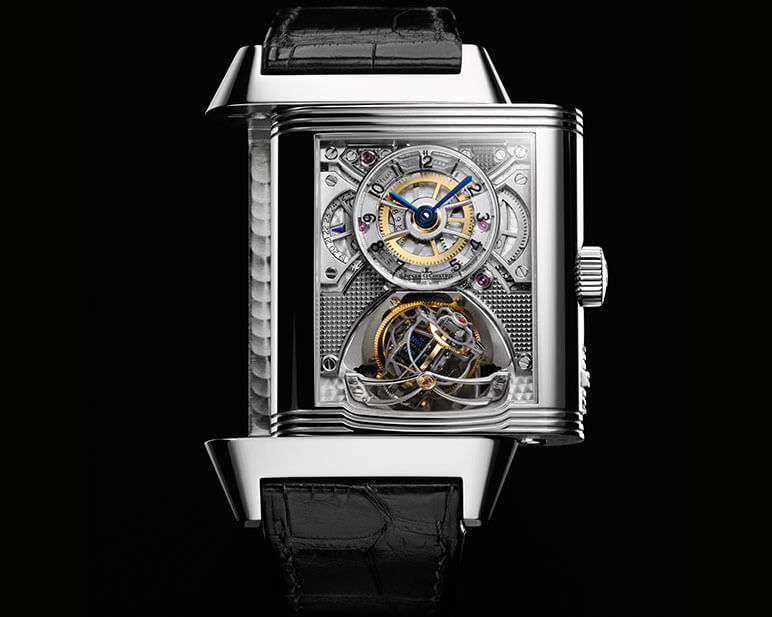So far Jaeger-LeCoultre has presented three gyrotourbillons: Master Gyrotourbillon 1 (2004), Reverso Gyrotourbillon 2 (2008) and Master Grande Tradition Gyrotourbillon 3 Jubilee (2013). Their precision deviates by a maximum of -1/+1 second a day. Compare this with the average precision of an entry-level tourbillon, which rates as good if it falls within COSC criteria of -4/+6 seconds a day. Not enough for Jaeger-LeCoultre, whose mechanism delivers the invaluable service of significantly improving the chronometric performance of the watches it equips. A look back at a major innovation and a milestone in the history of three-dimensional regulators.
Overcoming hurdles
“In 2002, our watchmakers had it in mind to create a multiple-axis tourbillon that would become part of the new Master Compressor line,” explains international marketing director Stéphane Belmont. “There were, however, two obstacles to overcome before we could bring this idea to life. Firstly, when the idea initially came up in the late 1990s, Jaeger-LeCoultre’s largest watches measured 41.5 mm in diameter. This meant there wasn’t sufficient space inside the case to house a balance that moved through three dimensions. Then much larger watches began to appear on the market in 2000, so that was no longer an issue. The second difficulty was the design stage, when we were literally stuck at the drawing board. Progress in CAD and the development of 3D renderings were absolutely decisive.” So decisive in fact that the simulation consultant hired to implement this new technology at the Manufacture stayed on and now heads the R&D department. The gyrotourbillon is the direct consequence of these developments; it ushered in a new era of gyroscopic regulators which only a very few other brands can claim to master.
Perpetual motion
“The original concept was for the balance to pivot in every dimension, not just vertically,” says Stéphane Belmont. “There was never any question of modifying a conventional tourbillon by adding new axes. For it to work, we had to devise a complete system and ensure perfect equilibrium between the perpendicular axes and the different parts. Hence the need for a simulation program. The balance spring must have a pre-defined shape and, once in place, cannot be altered. Because of its constantly changing angles, it’s impossible to calculate a mean for the various positions as we normally would. This type of system where the escapement is always moving is also a guarantee of precision as amplitude remains absolutely constant.”

The three executions of the gyrotourbillon are all different. The first has a flat balance spring, an inner cage that rotates once in 24 seconds and an outer cage that rotates once a minute. Its frequency is 3 Hz or 21,600 vib/hour. The second features a cylindrical balance spring; the inner cage rotates in a faster 18.75 seconds and the frequency is 4 Hz or 28,800 vib/hour. The third, unveiled this spring, has a spherical balance spring, a shape which allows for even more precise construction. The flying gyrotourbillon is mounted on the movement by a micro-ball bearing. The inner cage rotates once in one minute and the outer cage once in two and a half minutes. The frequency has been reduced to 21,600 vib/hour.
Deliberately light
The gyrotourbillon had to be sufficiently light so that when it rotated, enough power remained available for the functioning of the calibre as a whole, hence the choice of aluminium for the cages. “This is, to my knowledge, the first time any other metal than steel has been used,” comments Stéphane Belmont. “A micro-engineer was given special responsibility for machining the cages on a five-axis CNC machine that was brought in specifically for this purpose. Jaeger-LeCoultre proposes three versions of the gyrotourbillon, each a limited edition of 75 pieces. The first has sold out and the latest will be available as from December 2013.”
















